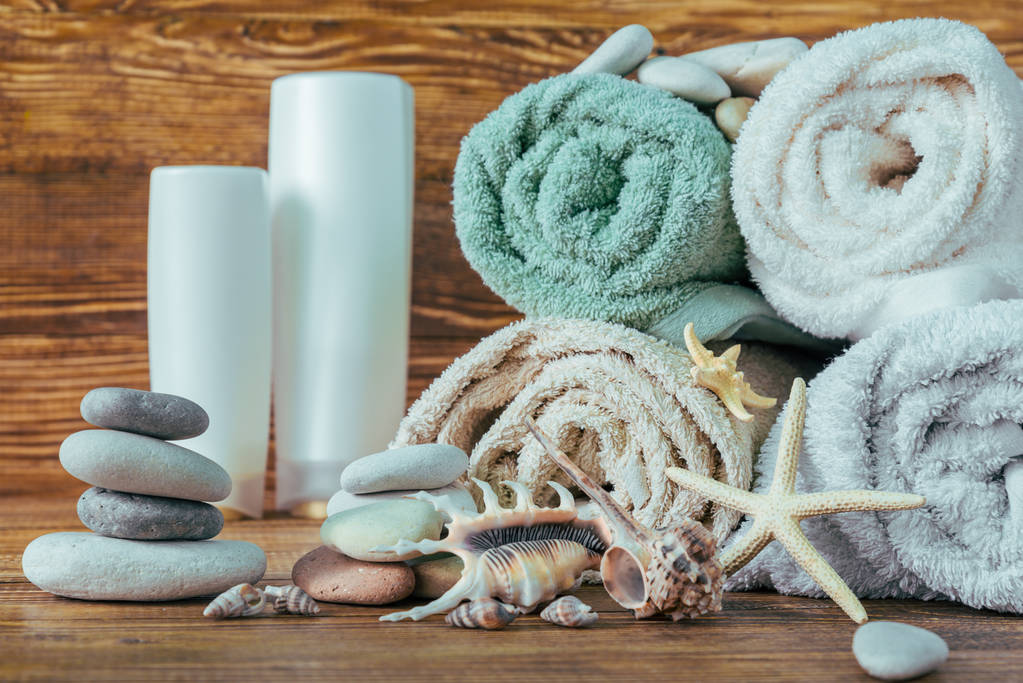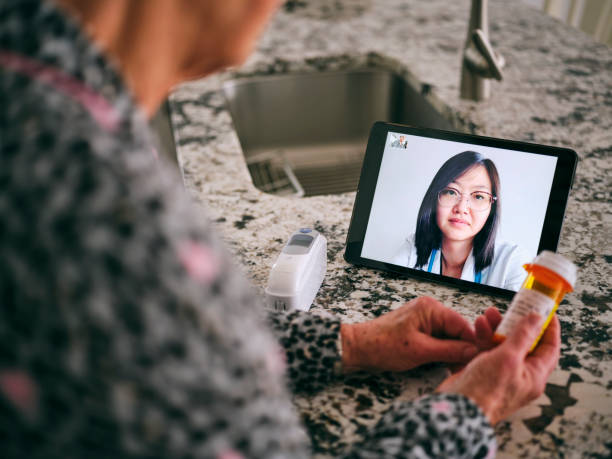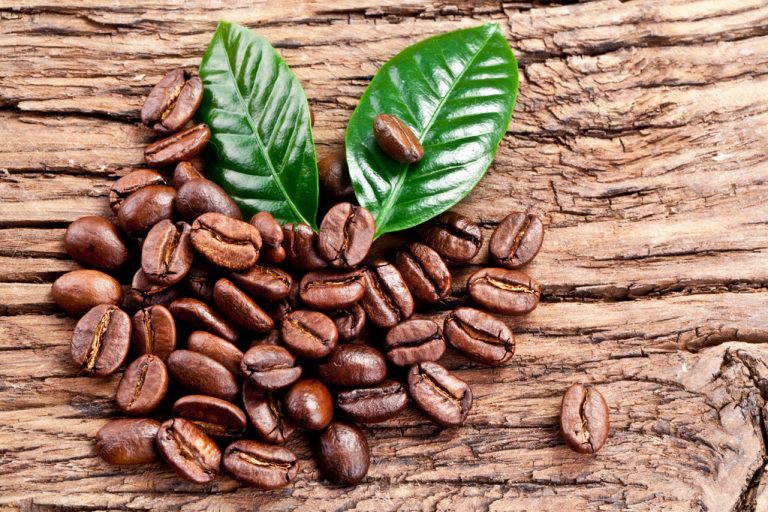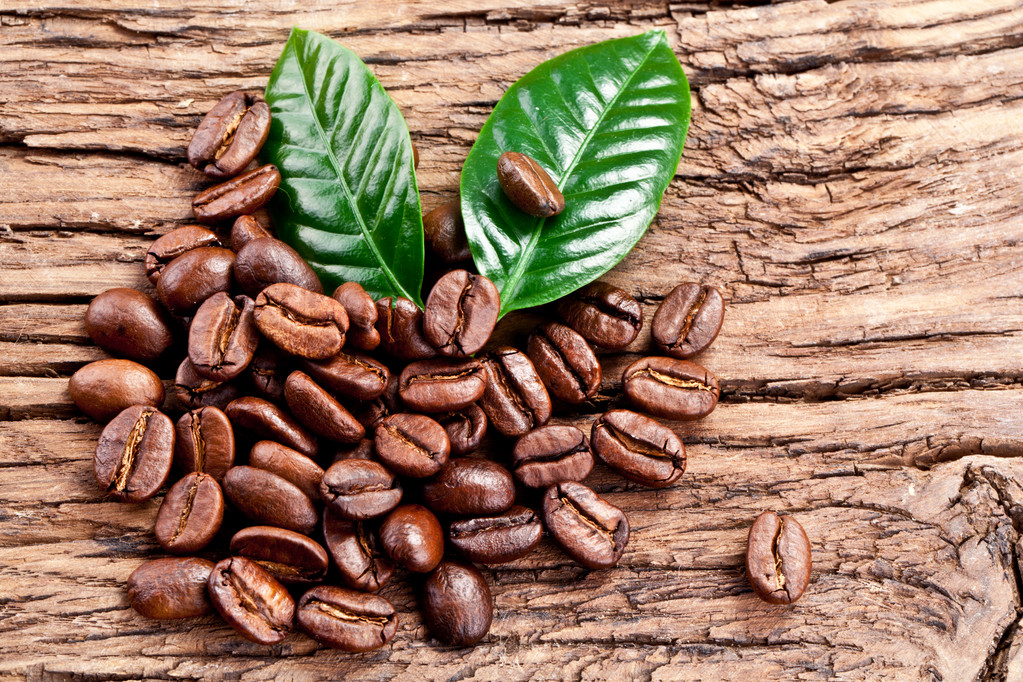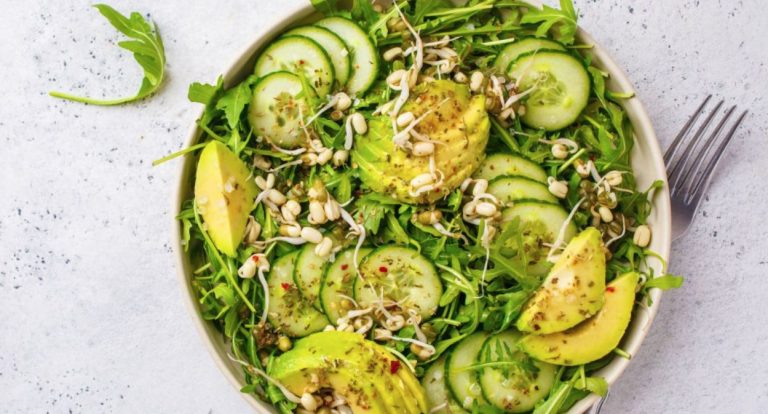Eating in the evening makes you fat? Is a Salad the Right Diet? Are smoothies replacing fruit and veg? Utopia has examined 12 nutritional myths.
Nutrition Myth 1: Lettuce is healthy

Lettuce is low in calories, rich in nutrients and particularly healthy. One might think so, but that’s not entirely true. Lettuce consists mainly of water. A lettuce, for example, contains 95 percent water. What other nutrients are in the lettuce and to what extent depends on the state of ripeness and the type of lettuce.
For the right diet, it is advisable to use the respective seasonal variety – then the most nutrients are in the lettuce. In winter and spring, for example, there is lamb’s lettuce. It is rich in vitamin C, provitamin A, potassium, calcium and iron. You can check when which fruit or vegetable is in season in the Utopia seasonal calendar.
Whether a salad is healthy also depends on how it is prepared: For example, a Caesar salad with dressing, parmesan, croutons and chicken breast is not a low-calorie meal. Ready-made salad dressings in particular often contain a lot of fat, salt and sugar. Salad is not generally healthy. But if you chop fresh seasonal vegetables or wild herbs into your salad and sprinkle a few nuts or seeds over it, it can become a real taste experience.
Nutrition Myth 2: Margarine is worse than butter
Butter fans agree: butter simply tastes good. It consists mainly of fat, at least 80 percent. The rest: about 16 percent water, lactose, milk protein, vitamins and minerals. Butter mainly contains easily digestible, short- and medium-chain saturated fatty acids. In addition, it is rich in cholesterol. Cholesterol has long been considered a risk factor for cardiovascular disease. Cholesterol is now considered unproblematic for healthy people.
Margarine, on the other hand, consists of vegetable oils, fats and water. Like butter, it contains about 80 percent fat. So that the whole thing tastes good and looks good, salt, acidifier and the coloring agent beta-carotene are added. Vitamins are often added – for example vitamin E, vitamin A and vitamin D.
Margarine needs to be hardened. In the past, the unhealthy trans fatty acids were created in the process. In the meantime, however, margarine manufacturers have changed production in such a way that the levels of trans fatty acids are low. Because margarine is made from vegetable oils and contains more unsaturated fatty acids, its fatty acid pattern is better. However, margarine often contains palm oil – but there are also palm oil-free margarines.
Ultimately, the choice between margarine and butter is a matter of taste. However, if you have high blood fat levels or want to avoid animal products, you should prefer margarine with a high content of polyunsaturated fatty acids. And regardless of whether it’s butter or margarine: it’s best to spread it thinly on the bread.
Nutrition myth 3: Smoothies are as healthy as fruits and vegetables
Smoothies are trending. We should eat five portions of fruit and vegetables a day. Smoothies are just what you need – but are they really just as healthy as fruit and vegetables?
Smoothies are made from pureed fruits and vegetables. Compared to the starting product, however, they contain fewer nutrients such as fiber and phytochemicals – especially when juice is added. Due to their lower volume, smoothies are less filling than fresh fruit and vegetables. And: The “chewing experience” is missing.
Smoothies are less filling, but at the same time the energy density is higher, so you run the risk of consuming more calories than you think. Store-bought smoothies also have the problem that they cannot do without (plastic) packaging and some sugar, flavorings or other additives are added to them.
Replacing an occasional serving or two of fruit and veg with a smoothie is fine for proper nutrition—but it shouldn’t replace daily servings of fresh fruit and veg. If you drink smoothies, it’s best to make them yourself.
Nutrition myth 4: Eating in the evening makes you fat
Many people – especially those who would like to lose a few pounds on their hips – forego eating in the evening. There are numerous studies that have addressed the issue. The answers are contradictory. The German Society for Nutrition (DGE) takes the position that it doesn’t matter when you eat. The decisive factor is the total energy consumed or consumed throughout the day.
This means that if you eat too much during the day and in the evening, you will also gain weight. So it’s not necessarily helpful to skip dinner. A light and balanced dinner is better. If you want to lose weight, you should make sure that the energy intake corresponds to the energy requirement. So only eat as much energy as your body uses per day.
Nutrition myth 5: Light products make you slim
Light products should contain less energy, fat or sugar. But less sugar does not mean fewer calories. In 2015, the consumer advice center in Bremen examined the Vitalis chocolate muesli by Dr. Oetker with “30% less sugar”. There really was less sugar in the muesli, but the energy content hardly differed from normal muesli.
It’s different with drinks: Less sugar often means fewer calories, but the sweet taste is replaced by sweeteners instead. Sweeteners can have side effects and are not recommended, especially for children. Drinks with sweeteners still taste sweet and make us get used to the sweet taste. In addition, some sweeteners may even have an appetizing effect.
Products with less fat, such as potato chips, often have the same problem: the reduced fat content is hardly noticeable in the number of calories. And if they do, the reduced-fat product often contains more water. Since fat is a flavor carrier, aromas and flavor enhancers are added to make the light product taste good. Industrially processed light products are therefore not much better than normal products.
Nutrition myth 6: Everyone needs to drink at least 2 liters every day

Drinking is important because we need liquid to live. Everyone knows the rule of thumb “drink two liters a day” by now. It is true that adults need about 2.5 liters of liquid per day. This also includes the liquid from food. You should take in the remaining 1.5 liters through drinks to ensure proper nutrition.
However, the individual fluid requirement depends on age and the time of year. The body also quickly needs 0.5 to 1 liter more liquid during sports, heat or illness. Those who tend to drink too little should try to drink at least a liter a day. Pay attention to your thirst and always have something to drink nearby – preferably water or unsweetened tea.
Don’t reach for bottled water from plastic bottles: The tap water in this country is of very high quality and more environmentally friendly – it doesn’t get any cheaper.
Nutrition Myth 7: Vegetable chips are better than potato chips
The name suggests that they are healthy: vegetable chips. Plus, it sounds like a healthier alternative to greasy potato chips. Vegetable chips are also true calorie bombs and can keep up with conventional chips in terms of fat content.
Vegetable chips made from sweet potatoes, carrots and beetroot are not a healthier alternative to potato chips, as confirmed by Stiftung Warentest. In addition to fat, some of the tested products also contained a lot of sugar and even harmful substances. The pollutant load may have been lower since then, provided that the manufacturers reacted, but the recipe will have changed less since then, because: fat tastes good and is a flavor carrier. It’s even better with (a lot of) sugar. So with veggie chips, like any other chips, the snack isn’t healthy just because it has veggies in it. That’s why it should only be enjoyed in moderation, whether made from potatoes or other vegetables.
Nutrition Myth 8: Juice is better than soft drinks
Cola, Fanta and Co. are unhealthy sugar bombs – we all know that. Orange juice for breakfast in the morning, on the other hand, is considered a healthy pick-me-up and almost part of proper nutrition. Fruit juice is made from fruit and contains vitamins and minerals.
But we forget: Juice also contains a lot of calories. A liter of juice can contain about as many calories as a liter of cola. On average between 400 and 500 kilocalories. And not all juices are the same: When buying, you should make sure that you buy real fruit juice. Sugar may have been added to the so-called fruit nectar.
It doesn’t matter whether it’s cola or juice: We should drink water to quench our thirst. Treating yourself to something every now and then is perfectly fine. Compared to cola, juice is the better choice: After all, juice contains vitamins and minerals.
Nutrition Myth 9: Carbohydrates make you fat
This nutritional myth ignores the fact that carbohydrates are a main nutrient in our diet and are not “bad” per se. We need them as a source of energy and so that our brain can work. But there are differences: There are simple and complex carbohydrates.
For example, table sugar is a simple, easily digestible carbohydrate. The blood sugar level rises quickly after consumption and quickly falls again due to increased insulin release. So you quickly regain your appetite. Whole grains or potatoes, on the other hand, contain a lot of complex carbohydrates and our body needs much more time to digest them. This means that the blood sugar level rises much more slowly and we feel full for longer.
So it all depends on what carbohydrates we eat. If you want to lose weight or eat healthily, you should eat complex carbohydrates from vegetables, potatoes and whole grain products. They also contain many vitamins, minerals, secondary plant substances and fiber and have a low fat content. And they fill you up longer.
Nutrition myth 10: Superfoods make you fit and heal diseases
Superfoods are on everyone’s lips – literally. They should be particularly healthy, make you fit and heal diseases. But “superfood” is actually little more than a marketing term for foods that are said to have particular health benefits. Numerous fruits, seeds or berries are among the superfoods.
They all contain a lot of nutrients, are supposed to support bodily functions such as muscle building, the immune system or the metabolism and in some cases even heal diseases. However, these effects are often not scientifically proven. Superfoods are certainly good for your health and in no way harmful – at most for your wallet, because chia seeds, goji berries and quinoa are not cheap.
But what many forget when it comes to superfoods: There is actually no fruit or vegetable that does not have a positive effect on the human body. Therefore, one can ask the question whether the goji berries and the matcha powder really have to be imported from distant countries just so that we can do something good for our health. What is overlooked in this nutritional myth: Regional superfoods such as broccoli, beetroot or flaxseed are better (and significantly cheaper).
Nutrition Myth 11: Frozen foods aren’t as good as fresh produce
What you buy from the freezer is not as healthy as what you buy fresh. Not quite, because that may be true for frozen meals, but not for frozen fruits and vegetables.
If fruit and vegetables are frozen immediately after harvest – as is often the case when processing frozen products – then this has an advantage over fruit and vegetables from the fresh department. Nutrients such as vitamin C are sometimes lost on transport routes and under the influence of light, whereas these are preserved during shock freezing.
A study by the University of Hamburg shows, for example, that the vitamin C content of raw peas has already decreased significantly after seven days of storage at room temperature, while the content hardly changed after two years of deep-freeze storage at -25 degrees.
Nutrition myth 12: Vitamin supplements replace fruit and vegetables

We need vitamins: they are important for many functions in our body. We cannot make them ourselves and must ingest them with food. Anyone who feels weak or sick likes to take a few vitamin pills. They should solve the problem.
The problem with vitamin supplements: The vitamins are isolated. Eating an apple or swallowing a pill – there is no comparison. The Federal Office for Risk Assessment (BfR) says that in most cases taking dietary supplements, which also include vitamin preparations, is superfluous. According to the German Society for Nutrition (DGE), Germany is also not a country with a vitamin deficiency: Most people are adequately supplied.
But there are situations in which it makes sense to resort to such preparations: in the case of unbalanced or inadequate nutrition, pregnancy, breastfeeding or in the elderly and in the case of chronic diseases. But it is better to have a doctor check what is really necessary for proper nutrition.
This also means a healthy amount of vitamins, because a lot doesn’t help much here. On the contrary: an overdose of vitamin D can lead to symptoms of poisoning or cause calcification of the heart, kidneys or lungs. If you consume too much vitamin A, your skin can change and hair loss, headaches or even organ damage can occur. The daily requirement of vitamins can be covered by a varied and balanced diet.
Conclusion: Don’t fall for the marketing promises of light products, superfoods or dietary supplements, but listen to your gut feeling.

